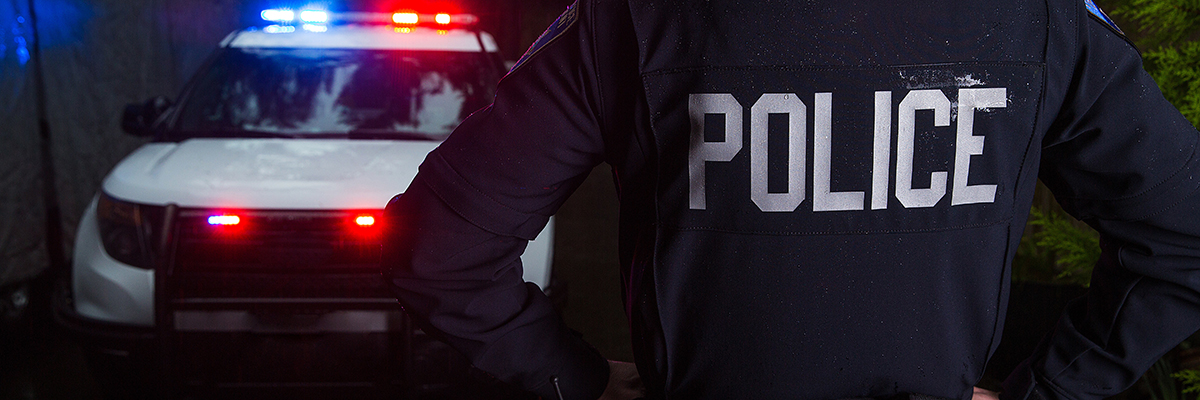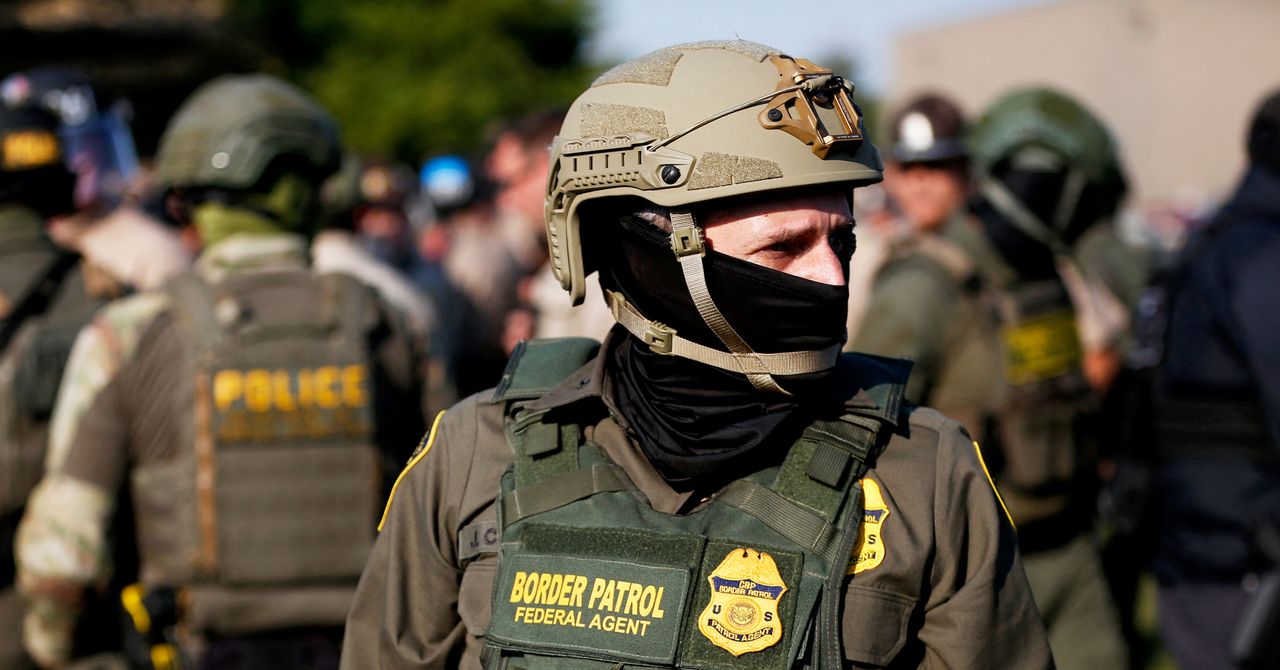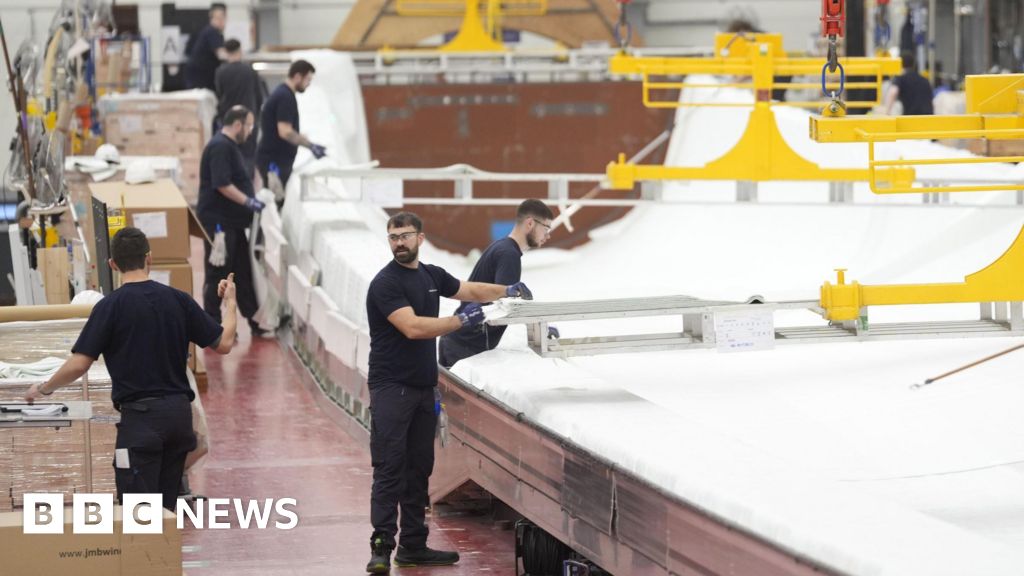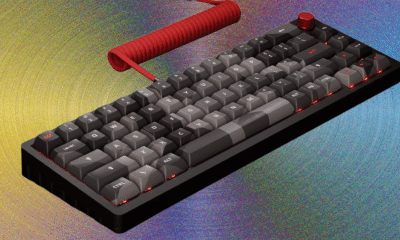Tech
Northern Ireland police kept inspectors in dark over surveillance of journalists | Computer Weekly

Northern Ireland police failed to disclose two covert surveillance operations against journalists to the UK’s independent surveillance watchdog in breach of their statutory obligations.
The Police Service of Northern Ireland kept inspectors from the Investigatory Powers Commissioner’s Office (IPCO) in the dark about two covert operations against journalists in 2018 and 2023, it has been disclosed.
Brian Leveson, the investigatory powers commissioner, confirmed in a letter to Northern Ireland’s policing board that the PSNI only informed IPCO about the covert operations in 2025, after they had become public.
The disclosure, in letters published in the Northern Ireland Policing Board’s annual human rights report, first reported by The Detail, comes as the PSNI is preparing to publish a review by barrister Angus McCullogh KC into police surveillance of journalists and lawyers in Northern Ireland.
Covert surveillance in 2018
In August 2018, the PSNI authorised an unlawful surveillance operation in a failed attempt to identify a confidential journalistic source suspected of supplying information to journalists Barry McCaffrey and Trevor Birney.
The then chief constable of the PSNI authorised a Directed Surveillance Authorisation (DSA) to allow the PSNI to monitor an individual suspected of leaking information to the two journalists.
But according to Leveson, the PSNI failed to disclose the existence of the surveillance operation against the journalists to IPCO inspectors during the watchdog’s annual inspection in spring 2019, in breach of its statutory obligations.
“There is no indication in the 2019 inspection report for PSNI that my inspectors were notified of any covert activity conducted against journalists, or with the intention of identifying a journalistic source,” he wrote in a letter to the Policing Board.
Leveson said that he had received no explanation for the PSNI’s omission. “The question remains why the DSA was not specifically brought to my inspectors’ attention in 2019, given its stated objective of identifying a journalistic source,” he said.
The PSNI did not inform IPCO of the surveillance operation until after the Investigatory Powers Tribunal disclosed it publicly in its judgment in favour of the two journalists in 2024, awarding them costs.
Independent inquiry
Barry McCaffrey and Trevor Birney told Computer Weekly that the PSNI had consistently failed to take oversight seriously during the journalist’s legal battle with the PSNI.
“It’s quite clear that the PSNI is incapable of acting honestly with any of these oversight bodies. They don’t take it seriously at all, or they show them complete disrespect by failing to properly and honestly interact with them,” said McCaffrey.
He said that the only way of getting to the truth was to hold an independent public enquiry.
“We now see with Brian Leveson that they have withheld evidence even when IPCO was asking for it and we fear that there are going to be more incidents of this when the McCullough review comes out,” he added.
2023 operation spied on Twitter
The PSNI also failed to disclose a surveillance operation against another unnamed journalist in 2023 to IPCO inspectors.
The operation targeted the covert monitoring of social media posts on X by investigative journalist Dónal MacIntyre.
In a letter to the policing board, Leveson said that the PSNI had failed to alert inspectors to the operation despite being asked to do so.
“This authorisation was not brought to my inspectors’ attention, despite their specific enquiry regarding any operations involving confidential journalistic or legally privileged material” he added.
The inspection was led by judicial commissioner Declan Morgan, the retired former Lord Chief Justice of Northern Ireland, who sought specific assurances from IPCO on surveillance authorisations issued agaist journalists. He reported that he identified no issues on non-compliance with the management of confidential information.
As Lord Chief Justice, Morgan ruled in 2019 that the Durham Police, which was assisting the PSNI, had unlawfully used search warrants in an attempt to identify Birney and McCaffrey’s sources.
Boutcher: journalistic risk not identified
PSNI Chief constable, Jon Boutcher told the policing board that he had no explanation why the PSNI had not disclosed the 2018 surveillance operation to IPCO inspectors.
“No reason or record can be located to explain why this was not highlighted to IPCO as intended,” he said.
He said that the PSNI had not reported the later 2023 surveillance operation to IPCO as it had not identified that it related to journalistic material.
“As this application had not been highlighted correctly in conjunction with journalistic material, it was not identified when preparing for the 2024 inspection and not highlighted to the IPCO inspectors,” he added.
He said that the material sought was limited to “public tweets” and did not seek private communications.
Up to 16 BBC journalists targeted
Following the IPTs’ ruling in favour of Trevor Birney and Barry McCaffrey, other journalists have made complaints that they were unlawfully spied on.
Former BBC journalists, Vincent Kearney has filed a complaint against the PSNI, and up to another 16 BBC journalists have also raised concerns about unlawful surveillance by the PSNI or MI5, according to the policing board.
Computer Weekly reported in July that the PSNI engaged in sustained surveillance of BBC journalists in Northern Ireland from at least 2006 to 2022.
Surveillance against BBC journalists allegedly took place during multiple PSNI operations, codenamed Operation Oxbow in 2009, Operation Settat in 2011, Operation Basanti in 2014 and Operation Grimmicaeie in 2022.
Data published by the policing board, shows that the number of complaints to the Investigatory Powers Tribunal relating to the PSNI’s use of surveillance powers, rose from 9 in 2022, to 16 in 2023 and 33 in 2025.
The PSNI received “notifications to disclose” information in 3 cases in 2022, raising to 6 cases in 2023, and 19 in 2024, which according to the policing board “might indicate that these are not hopeless cases.”
Oversight mechanism ‘not working’
Amnesty International said the admission that the PSNI covert surveillance operations targeting journalists, including one later ruled unlawful, were withheld from the UK’s surveillance watchdog is “deeply concerning”.
“The PSNI not only authorised covert surveillance designed to identify journalists’ confidential sources, in flagrant violation of press freedom, but then withheld details of those operations from the very watchdog charged with holding them to account,” said Patrick Corrigan, Amnesty International’s Northern Ireland Director.
“There must now be an overhaul of the mechanisms designed to provide oversight of police surveillance activities across the UK,” he said.
Daniel Holder of the Belfast-based human rights group the Committee on the Administration of Justice (CAJ) called for the government to implement the 1999 Patten Commission’s recommendation for a dedicated Commissioner for Covert Law Enforcement in Northern Ireland.
“We cannot continue with an oversight system that is dependent on the PSNI and other bodies here exercising such covert powers voluntarily telling the oversight body what they are doing, or hope that such matters are turned up in limited dip-sampling,” he said.
IPCO ‘not dependent on voluntary disclosures’
A spokesperson for IPCO said that the investigatory powers commissioner Brian Leveson will personally raise the issues with the PSNI chief constable, Jon Boutcher.
In response to the failures, the PSNI had enhanced its central record of surveillance authorisations and would implement training on the “acquisition and management of information relating to journalists,” the spokesperson added.
IPCO said that its oversight regime is not dependent on voluntary disclosures.
“Inspectors use proactive techniques, including ‘dip sampling’ of authorisations, to identify compliance issues and verify responses to requests for information,” the spokesperson said.
“The requirement for PSNI to highlight journalist-related authorisations provides an additional layer of assurance in the oversight process,” the spokesperson added.
Policing board “open to all courses of action’
The chair of the Northern Ireland policing board, Mukesh Sharma, said that the Board has expressed its serious concerns regarding the use of covert surveillance.
“The Board awaits the findings of the McCullough Review and remains open to all courses of action to ensure proper accountability,” he said.
The Police Service of Northern Ireland’s deputy chief constable, Bobby Singleton said that the PSNI welcomed the policing board’s human rights report.
“We will continue to work closely with the Policing Board’s Independent Human Rights adviser as we consider and respond to the content and recommendations of this wide-ranging report,” he said.
Tech
The Pepsi Man Is Coming to Save Samsung From Boring Design

Samsung has one of the biggest product line ups of any tech brand, yet when it comes to design, it’s consistently seen as an “also-ran.” While other companies have forged distinctive and instantly recognizable design languages, such as Nothing, Samsung has found itself behind in the style stakes. When you’ve got Apple as one of your biggest competitors, that’s not a great position to be in.
That’s not to say there haven’t been improvements in the last decade, and the occasional flashes of promise—most notable in its collaborations with external designers, like the Bouroullec brothers, who fashioned the Serif TV for the South Korean company. But that hasn’t stopped complaints of boring and unoriginal design, both internally and externally, and an inertia when it has led, leaving other companies to close the gap.
Being defined by performance over personality has hardly done Samsung’s bottom line any harm—it recently regained its lead from Apple in global smartphone market share and has been the global leader in TVs for almost two decades. But, in 2025, it looks there’s finally a clear desire from Samsung to bridge the gap between form and function, by giving design the focus it’s been lacking for far too long at the company.
Back in April, Samsung hired Mauro Porcini, its first ever chief design officer. Porcini has spent more than 20 years building award-winning design teams at 3M and PepsiCo, most recently leading a successful global rebrand for Pepsi—the company’s first in 14 years.
For a company as big as Samsung, this hire feels late. Apple created the same position for Jony Ive a decade ago, around the same time it was reported that innovation at Samsung was being stifled beneath layers of management. With those structural issues supposedly unpicked, Samsung now has work to do—something Porcini is keen to acknowledge.
Late to the Party
“We are in a moment of change, where the way people interact with any kind of machine or electronic device is going to be radically different in the coming years,” Porcini tells me. “These machines will change the way people live, work, and connect with each other—the way people fulfil their needs. For a company like Samsung, having design at the top, involved in the way you define the future of the portfolio based on those needs—it’s more important than ever.”
The march of AI is, of course, a helpful hook upon which to tie this long overdue move, but Yves Béhar, the founder and principal designer at Fuseproject who worked with Samsung on The Frame TV, tells me this has been years in the making, and something Samsung had initially looked externally to help put the wheels in motion.
“When we started working with Samsung on The Frame [released in January 2017], the CEO at the time, HS Kim, came to us and said—look, we want to transform ourselves from a consumer technology company, into an experience business,” says Béhar. “So we helped them set some principles around that, and worked on getting that message out into the business—of what it means to think about experience versus tech. This is exactly what we did with The Frame TV.”
Tech
Pedestrian deaths at midblock bus stops found to be up to 5 times higher

Bus transportation is an essential part of nearly every public transit system. From school students to everyday workers, riders depend on buses to transport them to the essential destinations. Because most passengers start or end their journey by walking, providing safe access to bus stops is key to enhancing pedestrian safety.
Pedestrian fatalities in the United States have significantly increased in recent years, with 2022 recording the most fatalities since 1981. While prior studies have analyzed bus stop safety using crash data, not all crashes near bus stops were directly related to the stop itself.
Candace Brakewood, an associate professor in the Department of Civil and Environmental Engineering, worked with Graduate Research Assistant Allison Rewalt and fellow CEE Professor Chris Cherry to address this gap by analyzing fatal transit bus stop-related pedestrian crashes from the Fatality Analysis Reporting System (FARS) and comparing them to other nearby fatal pedestrian crashes.
Their research, titled “An analysis of pedestrian safety at bus stops using FARS data,” was recently published in the Journal of Safety Research.
The research was funded through the Center for Pedestrian and Bicycle Safety(CPBS), which is a Tier I University Transportation Center (UTC) that is led by the University of New Mexico and includes UT, and a Dwight D. Eisenhower Graduate Fellowship that Rewalt received.
“Our work is unique because most prior studies used a more localized approach, relying on local or state crash data to understand the risks pedestrians face when walking to or from bus stops, whereas ours uses a national dataset to give us a bigger picture of what these risks look like nationwide,” Rewalt said. “Because our work is generalizable, it can be used to inform bus stop safety improvements across the country.”
Midblock stops present danger
The study uses pedestrian crash data that explicitly identifies bus stop-related crashes, providing a more nuanced assessment of crash risk factors for transit passengers and other pedestrians in the area, compared to previous studies that relied simply on proximity or other measures.
One of the key takeaways from the research is that there are three typical types of crashes that result in pedestrian fatalities at bus stops:
- pedestrians crossing to/from a bus stop at an intersection
- pedestrians waiting on the roadside at a midblock stop
- pedestrians crossing to/from a midblock stop.
Midblock stops are especially high risk, especially on high-speed arterials. Midblock locations increased the chances of a fatal crash by 4.7 to 5.2 times depending on the size of the buffer zone used in the analysis.
Pedestrians waiting on the roadside at a midblock stop is a crash subtype that is distinct to transit passengers, who often wait at the roadside for the bus to come, whereas other pedestrians would typically not be standing on the roadside for an extended period of time.
“This finding stood out because it points to a practical place to focus safety improvement near bus stops,” Rewalt said.
Finding infrastructure solutions
The UT researchers are hoping city planners, traffic engineers, and transit agencies can use their research findings to explore solutions to mitigate risk for pedestrians accessing buses. High-visibility crosswalks, especially at midblock crossings, or relocating bus stops closer to a signalized intersection could be infrastructure improvements to consider.
“We have an ongoing follow-up research project that continues to explore pedestrian safety at bus stops using a different nationwide dataset called CRSS that includes non-fatal crashes,” Brakewood said. “The overarching goal is to identify bus stop-related crash characteristics and determine which factors lead to more severe outcomes. We will have more results to share on the new project in the near future.”
Citation:
Pedestrian deaths at midblock bus stops found to be up to 5 times higher (2025, October 25)
retrieved 25 October 2025
from https://techxplore.com/news/2025-10-pedestrian-deaths-midblock-bus-higher.html
This document is subject to copyright. Apart from any fair dealing for the purpose of private study or research, no
part may be reproduced without the written permission. The content is provided for information purposes only.
Tech
DHS Wants a Fleet of AI-Powered Surveillance Trucks

The US Department of Homeland Security is seeking to develop a new mobile surveillance platform that fuses artificial intelligence, radar, high-powered cameras, and wireless networking into a single system, according to federal contracting records reviewed by WIRED. The technology would mount on 4×4 vehicles capable of reaching remote areas and transforming into rolling, autonomous observation towers, extending the reach of border surveillance far beyond its current fixed sites.
The proposed system surfaced Friday after US Customs and Border Protection quietly published a pre-solicitation notice for what it’s calling a Modular Mobile Surveillance System, or M2S2. The listing includes draft technical documents, data requirements, and design objectives.
DHS did not respond to a request for comment.
If M2S2 performs as described, border patrol agents could park their vehicles, raise a telescoping mast, and within minutes start detecting motion several miles away. The system would rely heavily on so-called computer vision, a kind of “artificial intelligence” that allows machines to interpret visual data frame by frame and detect shapes, heat signatures, and movement patterns. Such algorithms—previously developed for use in war drones—are trained on thousands if not millions of images to distinguish between people, animals, and vehicles.
The development of M2S2 comes amid the Trump administration’s sweeping crackdown on undocumented immigrants across the US. As part of this push, which has sparked widespread protests and condemnation for the brutal tactics used by immigration authorities, Congress boosted DHS’s discretionary budget authority to roughly $65 billion. The GOP’s “One Big Beautiful Bill” allocates over $160 billion for immigration enforcement and border measures—most of it directed to DHS—with the funds scheduled to be distributed over multiple years. The administration has sought to increase DHS funding by roughly 65 percent, proposing the largest expansion in the agency’s history to fund new border enforcement, detention capacity, and immigration surveillance initiatives.
According to documents reviewed by WIRED, locations of objects targeted by the system would be pinpointed on digital maps within 250 feet of their true location (with a stretch goal of around 50 feet) and transmit that data across an app called TAK—a government-built tactical mapping platform developed by the US Defense Department to help troops coordinate movements and avoid friendly fire.
DHS envisions two modes of operation: one with an agent on site and another where the trucks sit mostly unattended. In the latter case, the vehicle’s onboard AI would conduct the surveillance and send remote operators alerts when it detects activity. Missions are to be logged start to finish, with video, maps, and sensor data retained for a minimum of 15 days, locked against deletion “under any circumstances.”
-

 Tech1 week ago
Tech1 week agoWhy the F5 Hack Created an ‘Imminent Threat’ for Thousands of Networks
-

 Tech6 days ago
Tech6 days agoHow to Protect Yourself Against Getting Locked Out of Your Cloud Accounts
-

 Business6 days ago
Business6 days agoGovernment vows to create 400,000 jobs in clean energy sector
-

 Tech6 days ago
Tech6 days agoThe DeltaForce 65 Brings Das Keyboard Into the Modern Keyboard Era—for Better or Worse
-

 Sports1 week ago
Sports1 week agoU.S. Soccer recommends extending NCAA season
-

 Sports7 days ago
Sports7 days agoPCB confirms Tri-nation T20 series to go ahead despite Afghanistan’s withdrawal – SUCH TV
-

 Tech7 days ago
Tech7 days agoI Tested Over 40 Heat Protectant Sprays to Find the Best of the Best
-

 Tech1 week ago
Tech1 week agoSpit On, Sworn At, and Undeterred: What It’s Like to Own a Cybertruck






